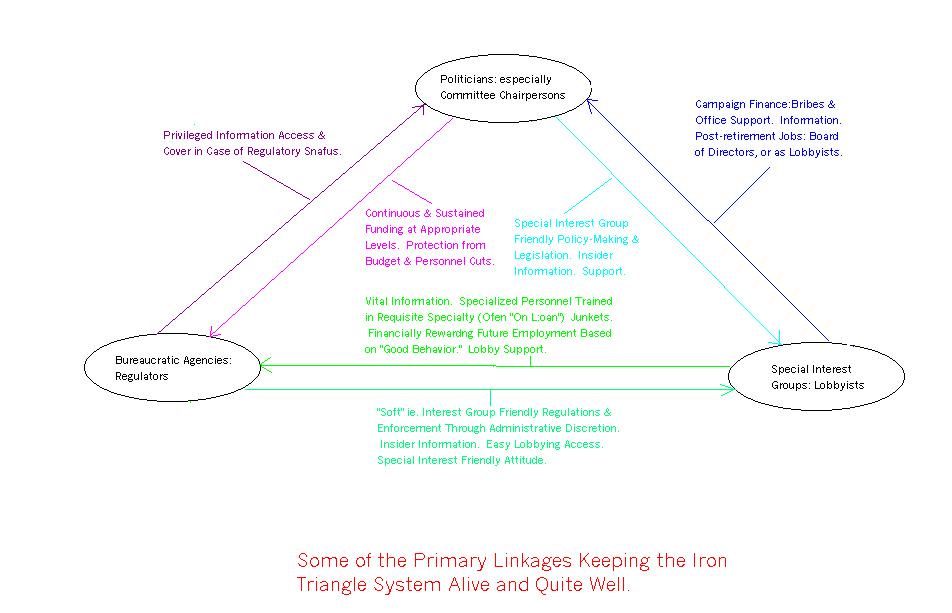|
Indicative Quiz Page
|
Introduction to Topic
While you most probably will not be overly comfortable with your instructor taking to task the book that he chose as your textbook, I do have one rather major disagreement with the chapter covering the bureaucracy, and in particular, the authors' treatment of the issue or question of the "Iron Triangle." O'Connor and/or Sabato provided three rather weak arguments to justify their belief that Iron Triangles no longer exist to a significant degree in American Government, and that they are hence no real problem. With that in mind (one assumes, anyway) they did not provide you with a graphic that makes much sense. Figure 9.4 is cute, but the real point of interest would be that which links these three main sets of actors together. To remedy these problems, I will first try to tear the three arguments of the authors apart, and then provide you with a more useful (if not so cute) graphic to trace the interrelationships which continue to allow the iron triangle to thrive to this day.
First of all, it is true that society is complex, but the three main sets of actors in the iron triangle do not, to a large extent deal with society, but far rather with one another. That their actions have some bearing on society, is certain, and that their actions have consequences is also not in doubt, but the one thing that an iron triangle shields its participants from, is the open gaze and the approbation (or lack thereof) of the public. If you need examples, you need look no further than California's energy woes, and the price fixing of gasoline in the Bay Area in particular. Have you been consulted before you've paid the bills? As for cross-cutting issues, they are nothing new. All they impose upon the members of one iron triangle is to meet and coordinate policies with members of others. It is not for no reason that these are called issue subgovernments. They tend to work together for very similar purposes. Have you ever wondered why Detroit was producing gas-guzzlers when most of the world was moving towards more gas efficient models. Could they have some "unknown" links with the big seven oil producers? Oops, that is called conspiracy theory, so lets not go there. Or why are public transportation systems in California such a mess, whereas in many other civilized countries, they actually work. Well what might happen to the Seven-Sisters if everyone used public transportation? Oops, conspiracy theory rears its ugly head again... And finally, the issue of the proliferation of interest groups. Well except that they are one of the main players in the iron triangle, they shouldn't be too much of a problem. If they happen to be public interest groups (with no money, as is usually the case) they can be frozen out of the triangle (heck, why is it called an iron triangle anyway?), but if we are talking about special interest groups (the ones with money), well being part of the triangle probably gives them about as much access as they wish... So why should the iron triangle have any trouble thriving in the present environment? Cause the book says so even if common sense does not. I suggest you go with common sense, from time to time...
Now as for that graphic:
